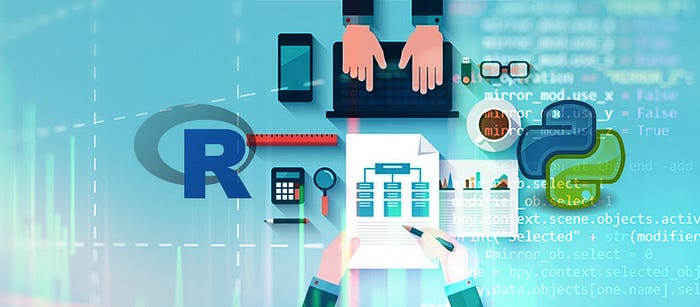The usage statistics posted on several websites depict that Python is currently more popular than R. However, Python is a general-purpose programming language. It is used widely by developers for building desktop GUI applications and web applications, in addition to data analysis and predictive modelling. On the other hand, R was designed specifically with features to facilitate statistical computing and data analysis.
Many data analysts prefer Python and R to other programming languages. Both Python and R are open source programming languages. Both programming languages allow data analysts to avail a wide range of data analysis libraries and frameworks. But the smarter data analysts always keep in the mind the pros and cons of both Python and R. They even evaluate the pros and cons of each programming language based on precise project needs.
Choosing the Right Programming Language for Data Analysis: Python vs. R
Design Goal
At present, Python is one of the most widely used general-purpose programming languages. Its syntax rules enable developers to build applications with a concise and readable codebase. Hence, many programmers find it easier to write applications for data analysis in Python. Unlike Python, R is not a general-purpose programming language. Its features focus exclusively on statistical computing and data analysis. Many programmers avoid writing data analysis applications in R to adopt new coding concepts and best practices.
Packages
Both Python and R enable data analysts to avail a variety of packages. While using Python, the data analysts can use Pandas to aggregate, manipulate, and visualize relational data. Likewise, they can use Seaborn to visualize statistical models. The advanced Python packages like TensorFlow, Theano and Keras further optimize data analysis by leveraging machine learning and deep learning. On the other hand, the R packages are developed as a combination of R functions and data. An R programmer has the option to choose from a wide range of user-contributed packages for data analysis. He can use widely used packages like caret, dplyr, ggplot and lattice to handle various stages of data analysis.
Speed
Many data analysts compare Python and R based on their individual performance and speed. Several studies suggest that Python is faster than several widely used programming languages. The programmers can further speed up Python applications by using tools and algorithms. Unlike Python, R was not developed as a general-purpose programming language. It was developed for statisticians and data analysts. Hence, the programs written in R are slower than in Python programmers. Also, the quality of code impacts the performance of R programs directly. Many software developers use packages like FastR, Riposte, pqR, and renjin to speed up R programs.
Data Visualization
Often data analysts look for robust data visualization tools to make it easier for managers to detect trends, patterns, and correlations. Python allows data analysts to choose from several data visualization libraries — Seaborn, Matplotlib, Bokeh and Altair. These Python libraries enable users to present huge volumes of data in an easy-to-comprehend visual format. At the same time, R also allows data analysts to choose from a wide range of data analysis packages — googleVis, rCharts, gplot2 and ggvis. These data analysis packages make R score over Python. Many data analysts prefer R to Python to visualize data more appealingly.
Usage
At present, both Python and R are used widely by programmers for data analysis. But R was initially used in academics and research. The enterprises subsequently used the programming language for data analysis. Python is used widely by enterprises for developing a variety of applications in addition to simplifying data analysis. Many enterprises use Python for predictive and routine data analysis processes. They use Python to analyze the data collected from various sources and present the results visually through charts or maps. On the other hand, enterprises prefer R to Python for the statistics-heavy project. R makes it easier for data analysts to experiment with different ideas without writing additional code.
Learning Curve
Often beginners explore ways to learn a robust programming language for data analysis without putting extra time and effort. As noted earlier, the simple syntax rules of Python enable programmers to express concepts without writing additional code. The programming language further helps programmers to write clean, readable, and maintainable code. On the other hand, the steep learning curve of R requires beginners to put in extra time and effort. Beginners without prior programming experience often find it difficult to learn R. Its fast and easy learning curve makes beginners prefer python to other popular programming languages including R.
Interoperability
Most developers use either Python or R for data analysis. But a programmer still has the option to call Python from R code. Likewise, he can run R code through Python. However, the developer has to use specific libraries to integrate Python and R programs. He can use rPython to call Python script and procedures from R. Similarly, he can use RPy2 to translate Python objects into R objects, and pass the translated objects into R functions. At the same time, RStudio — an integrated development environment (IDE) for R — allows data analysts to run Python scripts in the R console. Hence, data analysts can easily accelerate data analysis by integrating Python and R code.
On the whole, both Python and R help programmers to perform common data analysis tasks efficiently. But Python is a general-purpose highly flexible programming language, whereas R is designed specifically for statistical computing and data analysis. Hence, smarter data analysts always use Python or R according to the precise needs of individual projects.
